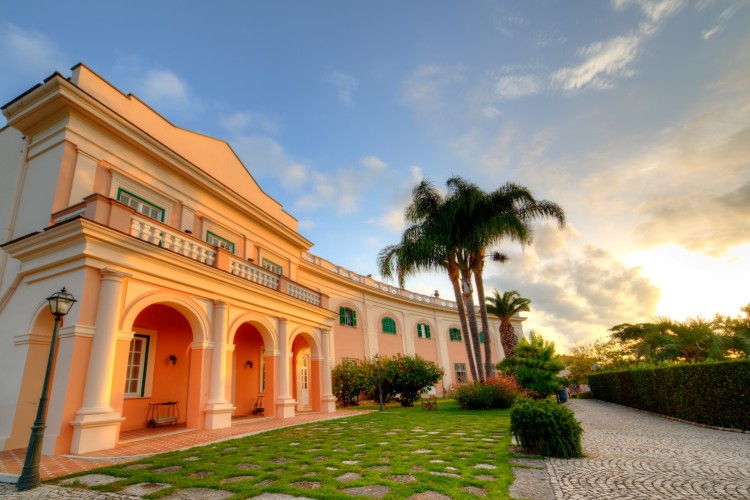
In 1930 “ The Irish Papal College Order” started the construction of the building named” The Convent” ,so transforming the old residential property of the Russian Lord Stenbock into a place for spiritual retreats and the education of the novice priests. With the outbreak of the last world war ,The Irish , which were about to ultimate the construction, had to leave the area.
The building was at first occupied by the German head quarters of the 274 Regiment Grenadier and later it was used as a military hospital. Towards the end of the war, the building was half destroyed by the liberation forces. Once that was over, the Irish priests went back to those magnificent buildings surrounded by wonderful gardens that so much stimulated the priests concentration. They used to leave there only during summer and spring until the 60’s, trying to restore what had been destroyed by the war .On the following twenty years the buildings and gardens were abandoned in a state of neglect, until 1973 when it was handled to the family who strongly wanted to upgrade the area transforming it in to a hotel complex. The restoration works dug out magnificent wall paintings from the interior of the old church dedicated to Saint Patrick and today named “THE CIBORIUM ROOM “.
The wall paintings were made by the Irish religious while they were on their spiritual retreat. They are rich in allegorical meanings; there are peacocks showed on the walls behind the Ciborium and some other on the side panels which refer to the immortality of the soul; The vine-shoot refers to the expansion of the Christian religion; The letters Alfa and Omega pending from the Celtic crosses symbolize the beginning and the end of life on earth; The thirteen sheep on the baluster of the ex-chorus represent the Christ redeemer together with his twelve apostles; The Swastikas painted on the east and west walls of the church, under the wooden ceiling, meet in to an opposite circle with direction towards the image of an anchor which symbolizes the salvation of the soul.
According to the ancient mesopotamic civilization, the opposite sense of rotation of the swastikas illustrated on one of the walls exposed at east and one exposed at west , indicate respectively the side where the sun would rise and side which it would set.
On the building’s ground floor the restorative works have created evocative and fascinating environments.
The wall paintings were made by the Irish religious while they were on their spiritual retreat. They are rich in allegorical meanings; there are peacocks showed on the walls behind the Ciborium and some other on the side panels which refer to the immortality of the soul; The vine-shoot refers to the expansion of the Christian religion; The letters Alfa and Omega pending from the Celtic crosses symbolize the beginning and the end of life on earth; The thirteen sheep on the baluster of the ex-chorus represent the Christ redeemer together with his twelve apostles; The Swastikas painted on the east and west walls of the church, under the wooden ceiling, meet in to an opposite circle with direction towards the image of an anchor which symbolizes the salvation of the soul.
According to the ancient mesopotamic civilization, the opposite sense of rotation of the swastikas illustrated on one of the walls exposed at east and one exposed at west , indicate respectively the side where the sun would rise and side which it would set.
On the building’s ground floor the restorative works have created evocative and fascinating environments.
The Chapel wooden ceiling has been renewed completely; and so for the precious marble floors; The construction of arches inside the old refectory; The delimitation of the old chorus and the kitchen spaces with skilful moulded walls. Thanks to the new interior decoration, the ground floor halls can host: weddings, concerts, meetings and receptions. The first floor that was once occupied by the theology students, is now a meeting hall capable of holding 30 persons and 13 double rooms with panoramic view.
Questo post è disponibile anche in: French, German, Italian, Russian, Spanish





























